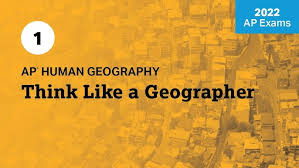
The Homework Routine in AP Human Geography:
In AP Human Geography, homework isn't just about finishing assignments—it's about diving deep into the material and building a strong foundation for the AP exam. One of the key components of our homework is note-taking, which helps us break down and fully understand each concept and subtopic. Here’s a closer look at the homework format and what we’ve done to stay on top of the content.
1. Note-Taking from the Textbook:
Each subunit in the course comes with its own series of homework assignments where we are required to take detailed notes from our textbook. These notes aren’t just a simple overview—they require us to focus on each specific subtopic within the larger unit, helping us better grasp the material.
For example:
- Subunit 3.1 (Population and Migration): We would be required to take notes on topics like population density, population distribution, and migration theories, breaking each down into its own section.
- Subunit 4.3 (Political Geography): We’d need to take notes on things like political boundaries, territoriality, and the impact of supranational organizations.
These detailed notes have helped me organize my understanding of the subject and made it easier to review specific topics when preparing for exams. Every section of the subunit has its own importance, and organizing notes by subtopics ensures that nothing is missed.
2. Breaking Down Each Subtopic:
The key to success with the notes was being thorough and structured. For each subunit, we would divide the content into smaller, more digestible chunks. Each subtopic within the unit was broken down into its own section, so we could focus on specific ideas, terms, and examples.
For instance, in Unit 2: Population and Migration, we would create notes for:
- Population Growth: Focusing on models like the Demographic Transition Model (DTM) and population pyramids.
- Migration Patterns: Breaking down push-pull factors, types of migration (voluntary vs. forced), and major migration trends.
This helped create a solid foundation and allowed us to study each subtopic in detail instead of trying to remember everything at once.
3. The Vocab Packets:
In addition to the note-taking, one of the most important aspects of our homework was the vocabulary packets. For each unit, we were given a comprehensive vocab packet with key terms that we needed to define and learn. These packets were essential in mastering the course’s complex terminology and concepts.
For example:
- Unit 1: Geography, Its Nature and Perspectives: Terms like cartography, GIS (Geographic Information Systems), spatial distribution, and topography were included.
- Unit 4: Political Geography: We’d learn terms like sovereignty, nation-state, gerrymandering, and supranational organizations.
Completing these vocab packets helped reinforce what we were learning in class and allowed us to familiarize ourselves with the language of geography. Vocabulary is a major part of the AP exam, and these packets were instrumental in making sure we could define and apply terms in both multiple-choice and free-response sections.
4. How It All Came Together:
At first, the homework assignments seemed like a lot—taking detailed notes and completing large vocab packets—but as we progressed through the course, I started to see how they all fit together. The notes helped me organize each unit’s content, while the vocab packets ensured I knew the precise language needed to discuss each topic clearly and confidently. Together, these assignments laid the groundwork for the more complex tasks we’d face, such as writing essays or analyzing maps.
How This Homework Helped Me:
-
Better Organization and Understanding
The process of breaking down each subunit into sections made it easier to understand the material step by step. Instead of feeling overwhelmed by an entire unit, I could focus on small pieces at a time, knowing that each piece contributed to my overall understanding of the subject. -
Prepared for the AP Exam
The combination of detailed note-taking and learning the key vocabulary terms made me feel more confident about taking the AP exam. When it came time to review, I already had clear, organized notes that I could use to study. Plus, the vocab packets helped me become familiar with the exact language needed to explain geographic concepts on the test. -
Developed Study Habits
The homework assignments also helped me develop good study habits. Completing notes and vocab packets consistently made me stay on top of the material and kept me prepared for tests and quizzes. It wasn’t just about doing the work—it was about mastering the content in a way that was effective and lasting.
Final Thoughts on the Homework:
Although the homework load in AP Human Geography was definitely challenging, I’ve come to appreciate how it helped me truly understand the material. The combination of notes and vocabulary packets kept me organized, gave me a strong foundation in geographic concepts, and ultimately set me up for success in this class and on the AP exam. While it may have been time-consuming, the effort was well worth it, and I can confidently say that this homework structure played a huge part in helping me succeed in AP Human Geography.

